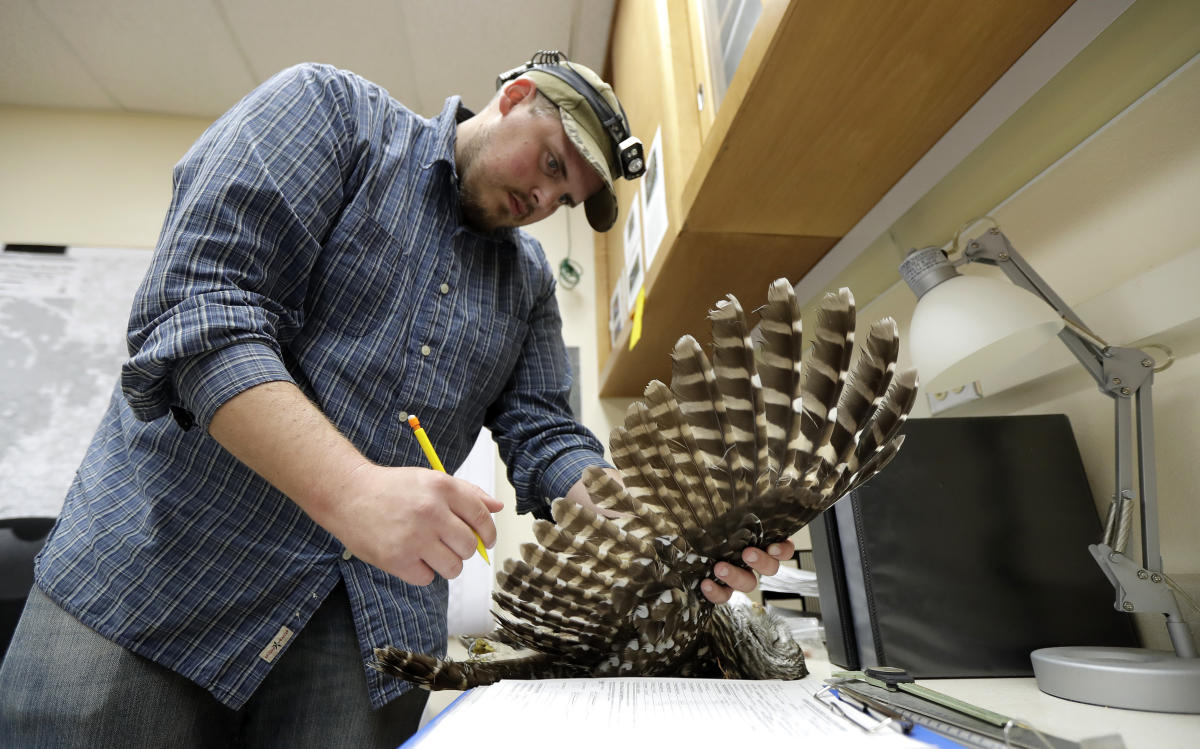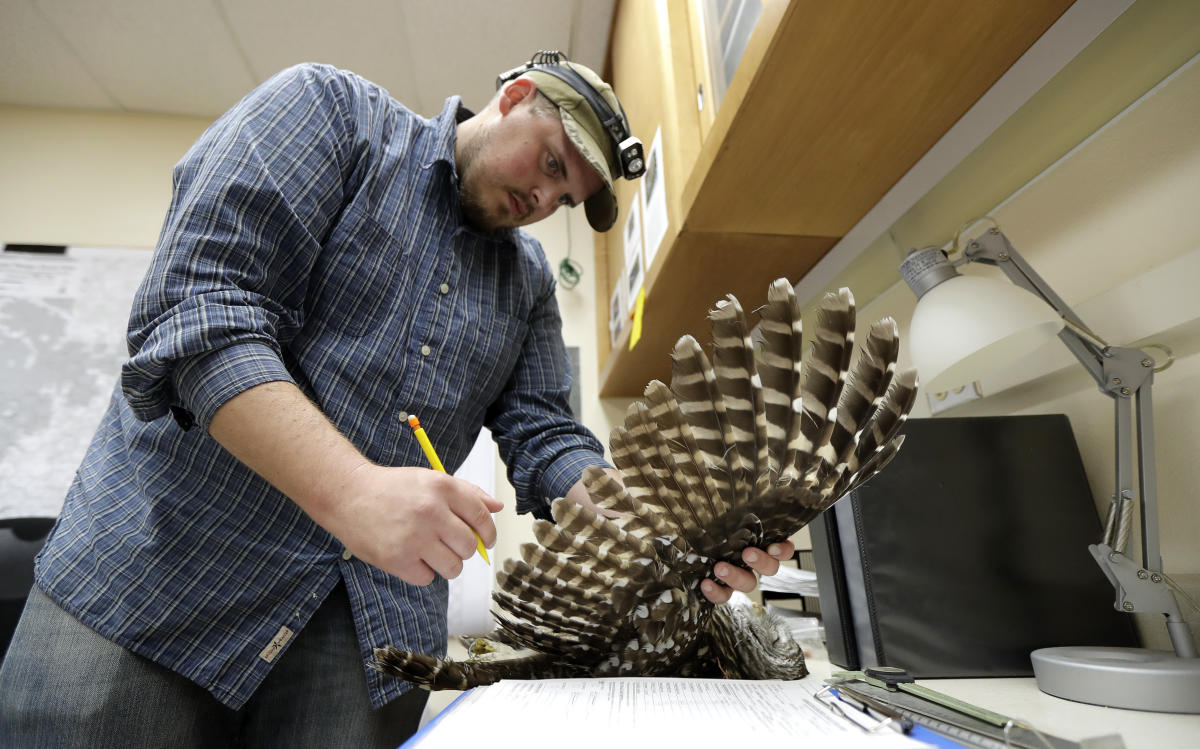
To save the imperiled spotted owl from potential extinction, U.S. wildlife officials are embracing a contentious plan to deploy trained shooters into dense West Coast forests to kill almost a half-million barred owls that are crowding out their smaller cousins.
The U.S. Fish and Wildlife Service strategy released Wednesday is meant to prop up declining spotted owl populations in Oregon, Washington state and California. The Associated Press obtained details in advance.
Documents released by the agency show a maximum of about 450,000 barred owls would be shot over three decades after the birds from the eastern U.S. encroached into the West Coast territory of two owls: northern spotted owls and California spotted owls. The smaller spotted owls have been unable to compete for food and habitat with the invaders.
Past efforts to save spotted owls focused on protecting the forests where they live, sparking bitter fights over logging but also helping slow the birds’ decline. The proliferation of barred owls in recent years is undermining that earlier work, officials said.
“Without actively managing barred owls, northern spotted owls will likely go extinct in all or the majority of their range, despite decades of collaborative conservation efforts,” said Fish and Wildlife Service Oregon state supervisor Kessina Lee.
The notion of killing one bird species to save another has divided wildlife advocates and conservationists. Some grudgingly accepted the proposal after a draft version was announced last year; others denounced it as reckless and a diversion from needed forest preservation.
“The Fish and Wildlife Service is turning from protector of wildlife to persecutor of wildlife,” said Wayne Pacelle with the advocacy group Animal Wellness Action. He predicted the program would fail because the agency won’t be able to keep more barred owls from migrating into areas where some are killed off.
The shootings would likely begin next spring, officials said.
Barred owls would be lured by the shooters using megaphones to broadcast recorded owl calls, then shot with shotguns. Carcasses would be buried on site.
Barred owls already are being killed by researchers in some spotted owl habitats, with about 4,500 removed since 2009, said Robin Bown, barred owl strategy leader for the Fish and Wildlife Service. Those targeted included barred owls in California’s Sierra Nevada region, where the animals have only recently arrived and officials want to stop populations from taking hold.
In other areas where barred owls are more established, officials aim to reduce their numbers but acknowledge shooting owls is unlikely to eliminate them entirely.
Public hunting of barred owls wouldn’t be allowed. The wildlife service would designate government agencies, landowners, American Indian tribes or companies to carry out the killings. Shooters would have to provide documentation of training or experience in owl identification and firearm skills.
The publishing in the coming days of a final environmental study on the proposal will open a 30-day comment period before a final decision.
That follows decades of conflict between conservationists and timber companies that cut down vast areas of older forests where spotted owls reside.
Early efforts to save the birds culminated in logging bans in the 1990s that roiled the timber industry and its political supporters in Congress.
Yet spotted owl populations continued declining after barred owls started showing up on the West Coast several decades ago.
Opponents say the mass killing of barred owls would cause severe disruption to forest ecosystems and could lead to other species — including spotted owls — being mistakenly shot. They’ve also challenged the notion that barred owls don’t belong on the West Coast, characterizing their expanding range as a natural ecological phenomenon.
Researchers say barred owls moved westward by one of two routes: across the Great Plains, where trees planted by settlers gave them a foothold in new areas; or via Canada’s boreal forests, which have become more hospitable as temperatures rise because of climate change.
Supporters of killing barred owls to save spotted owls include the American Bird Conservancy and other conservation groups.
“Our organizations stand in full support of barred owl removal as a necessary measure, together with increased habitat protections for all remaining mature and old-growth forests,” the groups said in comments on a draft proposal to remove barred owls that was released last year.
Northern spotted owls are federally protected as a threatened species. Federal officials determined in 2020 that their continued decline merited an upgrade to the more critical designation of “endangered.” But the Fish and Wildlife Service refused to do so at the time, saying other species took priority.
California spotted owls were proposed for federal protections last year. A decision is pending.
Under former President Donald Trump, government officials stripped habitat protections for spotted owls at the behest of the timber industry. Those were reinstated under President Joe Biden after the Interior Department said political appointees under Trump relied on faulty science to justify their weakening of protections.
EMEA Tribune is not involved in this news article, it is taken from our partners and or from the News Agencies. Copyright and Credit go to the News Agencies, email news@emeatribune.com Follow our WhatsApp verified Channel





